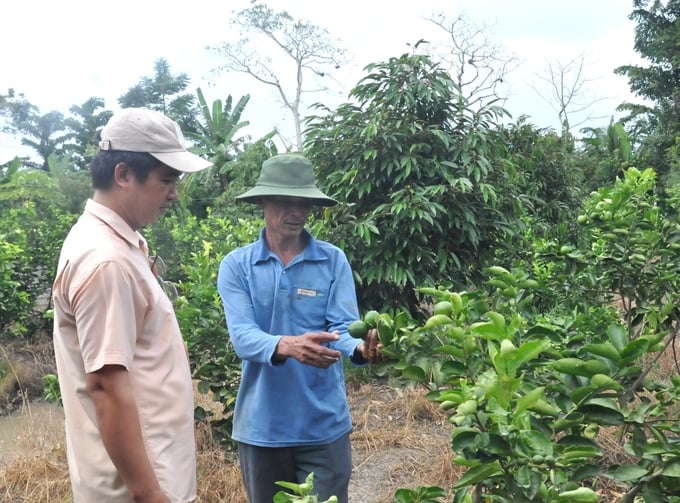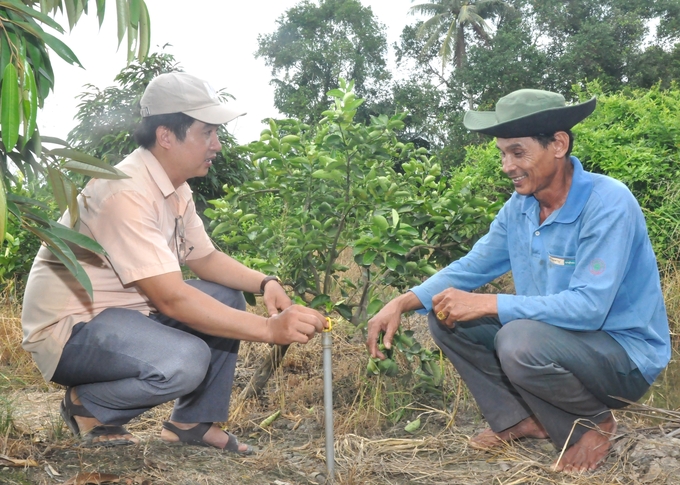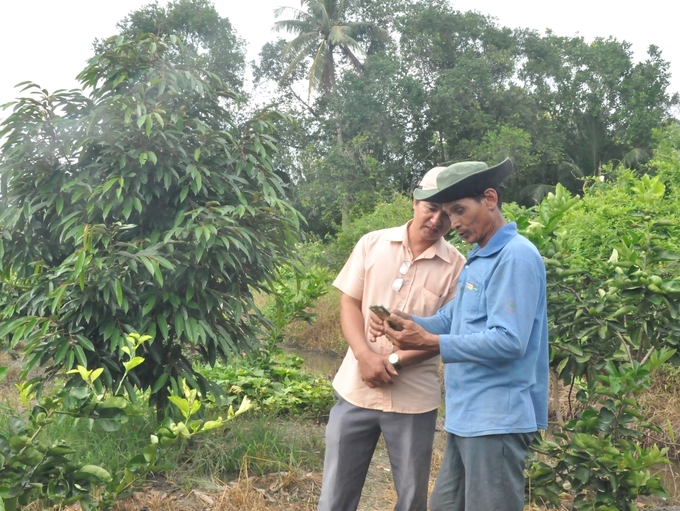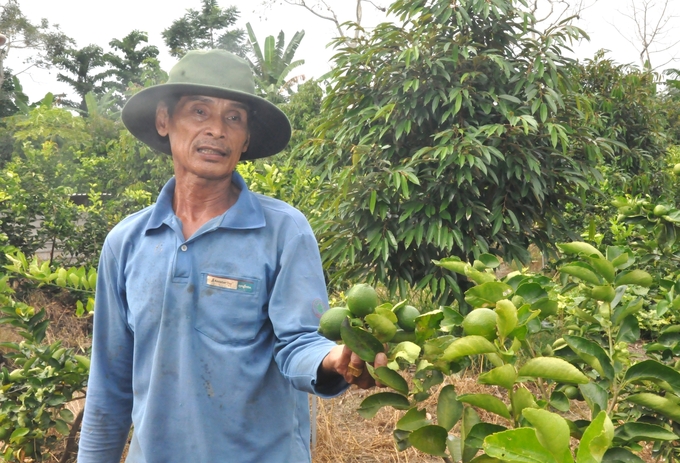December 1, 2025 | 16:29 GMT +7
December 1, 2025 | 16:29 GMT +7
Hotline: 0913.378.918
December 1, 2025 | 16:29 GMT +7
Hotline: 0913.378.918
Hau Giang is a province that boasts a total orchard area of approximately 46,400 hectares, with an annual crop yield of 560,000 tons. This province is particularly advantageous for fruit cultivation. Here, farmers concentrate on cultivating citrus (nearly 12,000 hectares), jackfruit (over 9,900 hectares), pineapple (more than 3,200 hectares), durian (nearly 3,000 hectares), mango, banana, soursop, and other crops.

Hau Giang province has an advantage in developing fruit orchards, with many high-value fruit trees grown by farmers for export. Photo: Trung Chanh.
Farmers are increasingly transitioning to economically valuable commodities such as durian and jackfruit, as per Mr. Vo Xuan Tan, Deputy Director of the Hau Giang Department of Agriculture and Rural Development. The agricultural sector recommends that producers avoid planting without a stable market demand and promotes the implementation of technological advancements to improve productivity and quality and prevent pests. It is recommended that farmers adhere to the organic, VietGAP, and GlobalGAP standards and administer their plantations according to production unit codes in order to satisfy the requirements of the export market.
In recent years, the Hau Giang agricultural sector has provided assistance to producers in the management of their plantations through the use of production unit codes. The province has presently granted 132 production unit identifiers to plantations, farmer organizations, and enterprises, according to Mr. Tran Anh Tuan, Deputy Director of the Hau Giang Crop Production and Plant Protection Sub-Department.

Farmers in Hau Giang province apply technology in fruit production to improve quality, ensuring export standards. Photo: Trung Chanh.
These include 40 codes for jackfruit, which span 528 hectares across 655 households and produce an annual yield of approximately 9,400 tons. The annual yield of mango is approximately 3,500 tons, with 25 codes spanning 358 hectares across 433 households. The annual yield of lime is approximately 5,760 tons, with a total of 10 codes spanning 166 hectares across 95 households. The annual yield of durian is approximately 6,580 tons, with 11 codes spanning 267 hectares across 237 households. One code for pineapple, which was granted in 2022 for export to the European market, covers 50 hectares across 22 households and produces an annual yield of approximately 1,500 tons.
In 2024, the department has conducted inspections and monitoring of 117 production units, as required, and has reported the results to the Plant Protection Department, according to Mr. Tran Anh Tuan. The year 2024 saw the issuance of 15 new production unit codes, including 9 for durian exports to China, 5 for lime exports to the European and New Zealand markets, and one for longan exports to the European market.

Agricultural technical staff guide farmers in orchard care, maintaining production unit codes to meet export market requirements. Photo: Trung Chanh.
The province has received 8 applications for new production unit codes in 2024 to facilitate exports. Within this group, four applications for seedless lime (originating from Nga Bay City) requested production unit codes for exports to New Zealand and Europe. Three documents (from Chau Thanh, Chau Thanh A, and Nga Bay City) requested for codes in order to export durian to the Chinese market, . One application (originating from Vi Thanh City) requested a code for pineapple exports to the European market. Hau Giang's Crop Production and Plant Protection Sub-Department has rendered assistance, counseling, and training to facilitate the completion of application dossiers and the submission of results to the Plant Protection Department as necessary.

The province has received 8 applications for new production unit codes in 2024 to facilitate exports. Within this group, four petitions for seedless lime (originating from Nga Bay City) requested production unit codes for exports to New Zealand and Europe. In order to export durian to the Chinese market, three documents (from Chau Thanh, Chau Thanh A, and Nga Bay City) requested codes. Photo: Trung Chanh.
Furthermore, there are 7 production unit codes for rice, which collectively extend across 294 households and encompass 272 hectares, with an annual production of approximately 6,880 tons. These included four codes for two production units in Long My District and two codes for one production unit in Phung Hiep District for export to European and Chinese markets.
Translated by Linh Linh

(VAN) The signing of a protocol between Viet Nam and China on the export of fresh jackfruit represents a significant milestone in agricultural trade cooperation between the two countries.

(VAN) On November 27, the Ninh Binh Department of Agriculture and Environment and the Institute for Green Growth Research organized a training course on greenhouse gas inventory for businesses.

(VAN) China’s cooking oil is suddenly flooding into India. It all comes down to a soybean surplus that Beijing doesn’t quite know what to do with.

(VAN) An Giang promotes supply-demand connections, standardizes quality and builds value chains, creating a foundation for sustainable bird’s nest development and aiming to expand exports.
/2025/11/24/5339-4-nongnghiep-075331.jpg)
(VAN) Recently, the conference on 'Sustainable Fisheries Linkage Chain - Tilapia for Export' took place in Tien Hai commune, Hung Yen province.
/2025/11/21/4309-2-153400_128.jpg)
(VAN) Green and low-emission rice is paving the way for Vietnamese rice to enter high-end markets, marking the beginning of a transformation journey toward greening and elevating the national rice brand.

(VAN) ‘Right to Win’ outlines a national action plan that shapes a new vision for Viet Nam’s agriculture in an era of renewal and global integration.